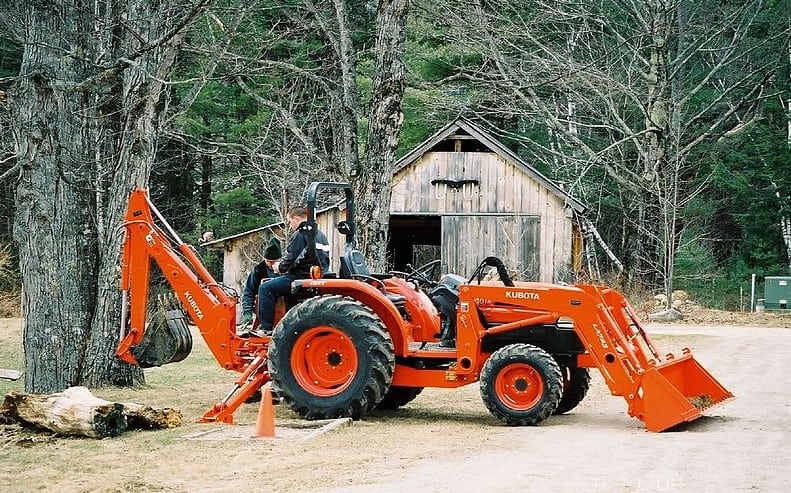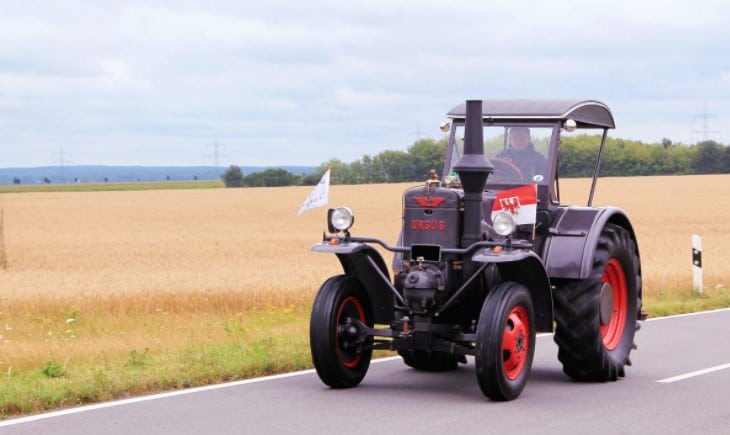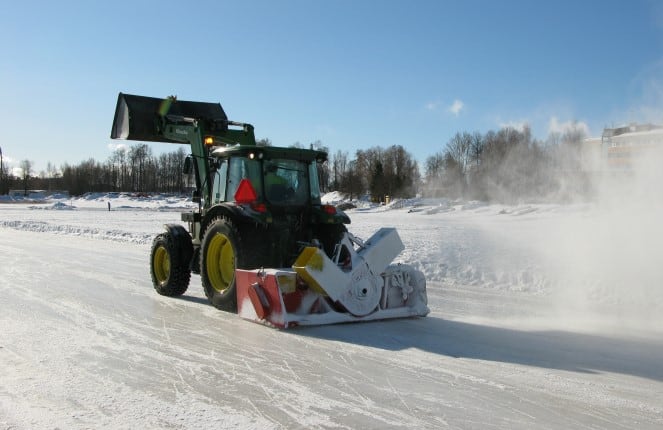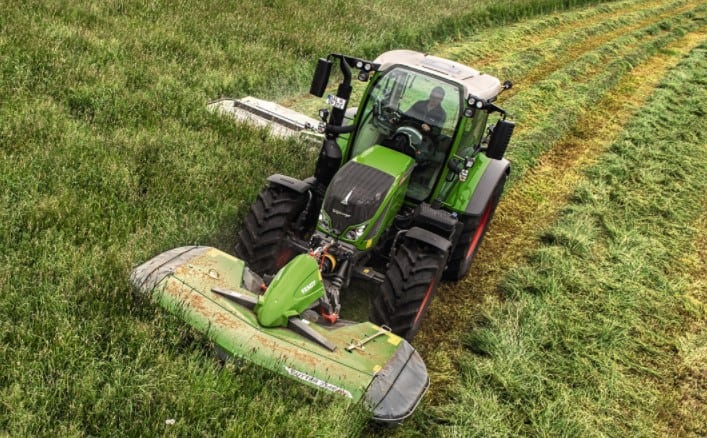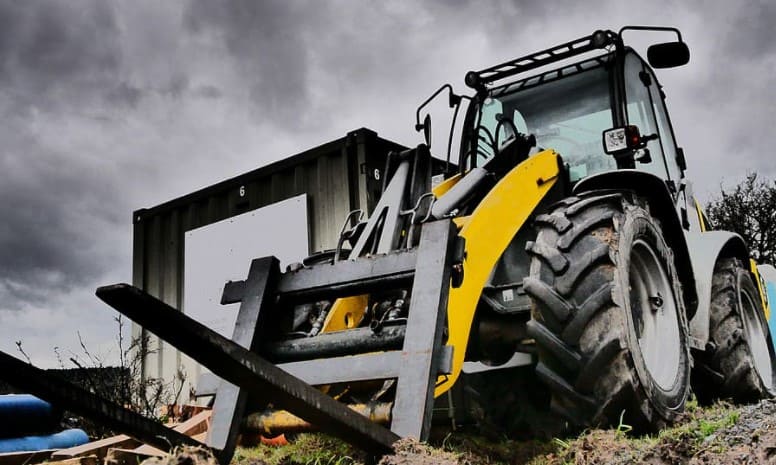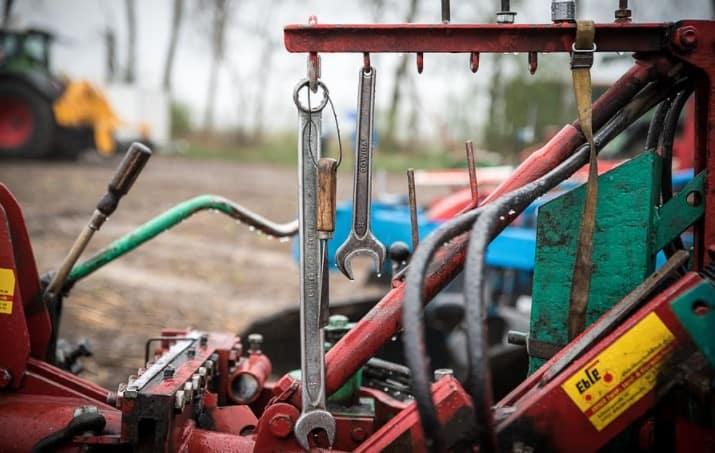- Common John Deere 1025r Problems - April 18, 2022
Tractors have been in use for decades, and they have made life easier for many people. These vehicles are engineered to provide a high tractive force at low speeds with the intent to pull trailers or machinery such as those used in agriculture, construction, and mining.
Without tractors, moving materials, crops, and other essential items from one location to another would be an energy-draining and tedious activity.
Tractors are multi-functional and versatile in their uses. This fact has triggered the innovation of an extensive array of attachments and accessories used with the tractor for different undertakings. Using the right accessories and attachments, farmers and property owners alike can tap into their tractor’s full potential.
In this article, we will look at different types of attachments and accessories to help you understand what exactly you need to buy for your tractor. However, before we dive into that, let us learn a few things about these critical parts.
Main Differences Between Attachments vs Accessories
The main differences between attachments vs accessories are:
- Attachments are supplementary devices connected to a tractor to serve a specific purpose, whereas accessories are the subordinate parts that you can attach to your tractor for safety.
- Attachments include a drawbar, a trailer hitch, and Front End Loader (FEL), whereas accessories include a spotlight, a tractor umbrella, a deluxe seat, Rollover protection structure (ROPS) among others.
- Attachments can be added to three locations on your tractor such as the front, middle and rear, whereas accessories can be attached in many different places.
Factors to Consider when Choosing Tractor Attachments and Accessories
Human beings have their differences when it comes to purchasing different items and products. Without the necessary attachments and accessories, a tractor is just another vehicle that you can drive around your property.
The attachments and accessories you require for your tractor may be different from those needed by your neighbor. Therefore, by considering the following factors, you can get the exact items that will satisfy your needs:
Your Budget
As human beings, our financial capabilities vary significantly. In today’s market, different brands have come up with products that carry out the same functions but differ in prices. Some are quite expensive depending on their features and functionality, while others are relatively cheaper.
Buying the attachments and accessories for your tractor can not be classified under impulse purchasing. Therefore, you need to be sure of how much you are willing to spend on these items.
Having a budget in place is a sure way of preventing overspending on some items. The thumb rule to remember is that being cheap does not always imply that the item is counterfeit or of low-quality.
What Attachments do you need?
The best answer to this lies in the needs and requirements that you have in your farm, construction, or mining site. Mowing, snow removal, tilling, grading, and loader work are just but a few of the tasks that a tractor can handle without any hassles.
However, each of the activities requires different attachments and accessories. You cannot just step into the market and buy whatever equipment comes your way. You have to identify which chores you want to accomplish so that you can get the appropriate equipment for it.
Power Requirements
Your tractor’s horsepower determines its capability and that of its attachments and accessories. Most of these implements rely on the tractor’s engine to operate.
Therefore, if the horsepower is low, it means that your tractor may not support some attachments and accessories. This might make it hard for you to handle some tasks. Moreover, if the horsepower is too high, you might as well forget about fuel efficiency.
It is recommendable to have slightly more horsepower than you think you require. This will give you the freedom to grow and use bigger implements should your needs change in the future.
The Brand
One of the factors that set different brands apart in the market today is their reputations. A company that has been in the tractor attachments and accessories business for a while is likely to have better products than one that has joined the industry recently.
Therefore, comparing the brands is very vital. One of the best ways to do that is by checking out consumer reviews online.
People’s opinions will give a clear glimpse of the efficiency of a particular company’s products. You can also get some insights from neighbors and partners who have the equipment for the task that you want to handle. They might have a better understanding of the market and guide you better on which products to purchase.
Size
When it comes to tractor attachments and accessories, size is of the essence. If the chores you want to accomplish are not so heavy, say you have a small farm, you can go for smaller implements.
However, small attachments and accessories may not be so useful when handling large tasks. The size is also crucial because you need to consider how you will store these implements. Will they fit in your store/garage?
Maintenance
Most of the implements you require for your tractor are mechanical. Therefore, one of the best techniques to keep them in good condition always is routine maintenance. This involves repairing or replacing any broken parts, lubrication, and cleaning.
So, now available are the spare parts for the attachment that you want? Are these implement reparable, or must they be replaced whenever they break down? Everybody wants to buy equipment that can be repaired and whose spare parts are readily available. The case is not different for tractor attachments and accessories.
The Tractor’s Size
Manufacturers offer tractors of different sizes in today’s market, ranging from small and medium to large. When looking for attachments and accessories, you want to make sure that your tractor can haul them around your farm, construction site, or mining area without any difficulties.
Compatibility
You need to understand that not all attachments and accessories will be compatible with your tractor. One of the best ways to ensure compatibility is by purchasing these implements from the same company that manufactured your tractor. Compatibility is vital in ensuring smooth operation once the attachment or accessory is installed.
The Attachments and Accessories
As we have mentioned before, without the necessary implements, a tractor is just but a vehicle like any other. However, when the attachments and accessories are mounted, it becomes a very functional and diverse machine that can be used to accomplish different tasks. Below, we are going to discuss the essential tractor attachments and accessories and their functions. We shall divide them into respective categories as follows:
Attachments
Front End Loader (FEL)
For most tractor owners, the FEL is the most common, necessary, and versatile attachment. This device can be used alone from the tractor’s front side or used together with other implements.
The FEL’s importance and versatility are boosted by the fact that it can handle different tasks around your farm or homestead. This attachment is ideal for moving heavy and voluminous materials, such as bags of fertilizer, hay, and gravel.
Additionally, the Front End Loader also handles mundane chores, such as moving animal manure to the compost pit. You can also use this loader to clear any snow lying on your driveway, although the snow’s thickness might affect the loader’s effectiveness.
Unlike the prevalent open bucket, you can switch between different accessories that can be fitted on the FEL’s arms. Such accessories include a clamshell bucket, bale grappler, and pallet fork.
The Rear Blade
As the name suggests, the rear blade attachment is mounted on the tractor’s rear side using a three-point hitch. It is then operated by merely driving the tractor forward and reverse.
If you have a gravel driveway that requires leveling or you want to clear snow from the driveway, the rear blade is there to give you satisfactory results as it was designed for just that purpose. Besides leveling, this unique mechanical implement can also be used to push and spread gravel or soil.
The earlier version of this equipment requires the operator to manually adjust it from side to side, rotate on its axis, or set it at the right angle without using any power. However, innovators have developed later versions of the rear blade that come with hydraulic assist.
For such, the tractor operator can make the adjustments without necessarily leaving their seat. Additionally, some newer models of the rear blade come with back-to-back blades for forward and/or reverse functionality.
Snow Blower
If you reside in places where there is extremely cold weather, you understand that snow can become a bother, especially when it blankets your driveway. Therefore, you need a tractor attachment that can clear the snow away effectively, and that is none other than the snowblower.
Unlike the Front End Loader, the snow blower’s effectiveness is not limited by the snow’s thickness. This equipment consists of two parts: the auger that breaks the snow and the impeller that blows it away.
Since this attachment is mechanical, it is either powered by the tractor’s Power Take-Off (PTO) or an integral motor. However, powering the equipment using PTO is the most common way since most snow blowers are mounted at the tractor’s rear side.
The front-mounted blowers cannot access the PTO shaft, and, therefore, they require an integral power source to operate.
Post Hole Digger
With this tractor implement, you don’t have to strain anymore when it comes to boring holes on the ground. Mounted on the tractor’s rear side using a three-point hitch, the Post Hole Digger leverages the tractor’s Power Take Off to carry out its duties.
You can use this drill to make perfectly round holes of any size when and where you want them, for instance, for putting fence posts.
The equipment can also be used to make larger holes for bushes and trees, making it a necessity for landscapers. The bits that accompany the Post Hole Digger are available in varying lengths and diameters for making holes of different sizes.
Mower/ Cutter
The other names referring to this attachment are Grooming Mower or Finishing Mower. If you have an extensive lawn, this is the best equipment to use in your mowing chores.
Since the tool gives impeccable results, you should use it on the parts of your lawn that need to look extraordinarily beautiful. This PTO-driven mechanical attachment can be mounted either between the front and rear tractor axles or at the tractor’s rear.
Rotary Cutter
The rotary cutter functioning is quite similar to that of a grooming mower. However, the two should not be interchanged because the rotary cutter is designed to handle weeds, shrubs, and long grasses. This implement is also referred to as Brush or Bush Hog and is explicitly designed to cut through rigid plant material and dense, bushy areas.
The Box Blade
The box blade is quite similar to the rear blade as they both carry out the same functions and share their usage. Additionally, their designs have so much in common and are both manually adjusted to their necessary forms.
However, the difference is brought about by the extra row of “scarifiers” found in the box blade but absent in the rear blade. For this reason, the box blade features a box framing that houses the scarifiers and the blade, while the rear blade has a simpler T-frame where its blade is attached.
By removing the scarifiers, the Box Blade can handle all the tasks done by the Rear Blade. Some of the tasks that the Box Blade can accomplish include building, grading, and leveling gravel driveways, creating and improving land contours, and leveling the ground for construction.
Hay Attachments
There are three essential tractor attachments you ought to have if you are dealing with hay: Hay Rake, Baler, and Bale Wrapper.
The Baler’s function is to gather all the cut crops and grass and put them together in round or square bales. Balers come in varying sizes and shapes. The Hay Rake is a tool used to arrange hay into windrows to make it easy for the Baler to do its job.
There are different variations of the Hay Rake, so you can choose one that suits your needs and preferences. The Rake can also be used to turn wet hay over to speed up the drying process. Finally, the Bale Wrapper does precisely what its name says: wrapping hay bales. A Bale Wrapper has a compartment that houses and dispenses the plastic used in packaging hay.
Land Plane
Leveling the ground/soil has never been this easy. Land Plane is an unpowered tool that works effectively with its two parallel blades to level the ground.
The blades are horizontally parallel to one another, and they have a slight diagonal angle that makes them perfect for grading and leveling the soil. Manufacturers have even included some scarifiers into a few Land Plane models to make them ideal for aggressive ground churning.
You can mount the Land Plane onto the tractor using the drawbar or the three-point hitch system. This is how this attachment operates; pulling the Land Plane causes the ground to scrape, and the excess soil is collected between the two blades. The accumulation of the soil and other materials forces the surplus to flow over the second blade’s width, leaving behind a flat and smooth ground.
Backhoe
This is the Einstein of any digging task that you want to accomplish. The Backhoe is mounted at your tractor’s rear end, and its primary use is digging. However, although it is not as versatile as other attachments, the Backhoe can also be used to move dirt and for small-scale grading.
Pallet Forks
These implements are a life-saver for people who deal with the movement of many pallets daily. Some of the constraints of these attachments are that they have no zero-turn mobility and are too big to use in a warehouse.
Nevertheless, Pallet Forks come in handy when moving crates into and out of the farm during harvest. Additionally, they promote the effortless receiving of new equipment from the delivery truck.
Accessories
There are so many accessories that you can fix on your tractor to make it more impressive for convenience, safety, and other purposes. However, we will look at the most crucial tractor accessories in the market today:
Canopies
Tractors are meant to be used in outdoor activities, such as in a farm, construction, or mining site. Sometimes, the scorching sun can be a bother to you as the operator.
If you prefer working in an open space but still under the shade, you need to get a tractor canopy. Being exposed to the sun’s UV rays for extended periods could lead to severe skin conditions. Moreover, if you are working in a snowy area, the canopy will prevent the snow from falling on you or getting into your eyes.
LED Lights
Your tractor, being a workhorse on your farm or construction site, may be required for some chores before the sun rises or after the sunsets. These are the crucial moments when the LED lights come in handy to light up your way as you tackle whatever task that is in front of you.
An extensive array of tractor LED lights is available today, ranging from long-distance and work lights to headlights. Besides being energy-efficient, LED lights are easy to install, and they are more powerful than other types of lights.
Cell Phone Holder
I am confident that staying away from your mobile phone is not an option when working in the fields. But how do you ensure its safety and easy access? It’s by using a traction cell phone holder on your tractor.
This accessory is necessary so that you can have your cell phone with you always for faster communication and access to other vital information. For instance, with a cell phone holder, you can conveniently watch a tutorial on your phone about how to attach other implements on your tractor while in the garage or out in the field.
Seats
If you desire to upgrade your tractor, installing a deluxe and comfortable seat is one of the best ways to do so. There are so many tractor seats available today, most of which promise maximum comfort and safety as you operate your machine.
Spending hours on an old, hard seat without a cushion could have negative impacts on your back and bottoms! When getting this accessory, ensure that you go for one that supports your spine and lower back to eradicate any injury risk.
Tool Box
A tractor is made of very many parts joined together, and sometimes, these parts break down or need a quick repair. What do you do if a particular nut goes loose and you are far from your garage? If you had not carried enough tools, then you will have a hard time.
A toolbox is a sure way of carrying the necessary items that may come in handy if repair is needed. Apart from the tools you might require to work on your tractor, such as a screwdriver, there are other apparatus you can carry in your toolbox to use in your projects. Such includes a hammer, tape measure, ratcheting straps, hitch pins, and pruning shears, among others.
Tire Chains
What happens when you are working in icy and snowy places or during the rainy days when the ground is soggy and muddy? Your tractor will most probably get stuck or slide and give you a hard time in the field or construction site. Installing chains on your tires will increase traction and prevent the tractor from skidding or getting stuck.
The thumb rule is to install the chains on the ‘drive’ wheels. If your tractor is a front-wheel-drive vehicle, the chains should go to the front wheels, and vice versa is true.
FAQs
Answer: PTO stands for Power Take Off, which refers to one of the many methods of moving power from the tractor’s engine to any mounted attachment, such as a Post Hole Digger.
The two types of PTO are Live and Independent. Live PTO uses a two-stage clutch, which allows you to slow down or change gears while the PTO is still functioning. Independent PTO means that you use a different clutch to control the PTO. Most of the current tractors feature a Live PTO controlled by a push-button or selector swish. This maximizes the safety of those operators who want to get close to the PTO shaft.
Answer: Your tractor’s FEL (Front End Loader) is a multipurpose attachment, and it can definitely be used to dig a hole. Using this equipment will save you a lot of time in manual labor. You can repeat the process as many times as you wish until you achieve a sufficient depth and diameter for the hole.
Answer: A box blade is a three-sided metal attachment mounted on your tractor, used in soil and ground leveling. There are scraping blades found at the front and rear of the Box Blade just below the rear panel. Box blade disintegrates soil by using scarifiers. This device is safe to use for leveling the ground for gardening, farming, or lawn purposes.
Answer: Compact tractors are small tractors designed to handle all the tasks that landowners need to accomplish daily. Most of such vehicles come with a Front End Loader (FEL) to help you with lifting, light grading, and carrying activities that you may be required to undertake every day.
They also have a 3nt hitch and a 540-RPM (Rotations per Minute) Power Take Off. That is enough power to run several attachments, including augers, tillers, and mowers.
Conclusion
As we wrap up, the key thing to remember is that a tractor without any attachments and accessories is just another vehicle, and it cannot fully optimize its potential. In today’s market, the number of tractor accessories and attachments available may overwhelm you.
You might become confused about which one to choose for your use. However, the above description shows some of the most necessary attachments and accessories that you can get for your tractor.
Moreover, we have clearly laid out how each one is used and how and where they can be mounted. We did not exhaust the list, and we cannot choose for you because we do not know your needs, preferences, budget, and requirements.
Therefore, it is upon you to conduct detailed research so that when you go to buy any of these implements, you will walk home with one that fully satisfies your needs. It is also advisable to check how much horsepower each of the mechanical elements requires, to ensure that you have the necessary power for the attachment or accessory of your choice.


